6 Amazing Card Making Layering Techniques
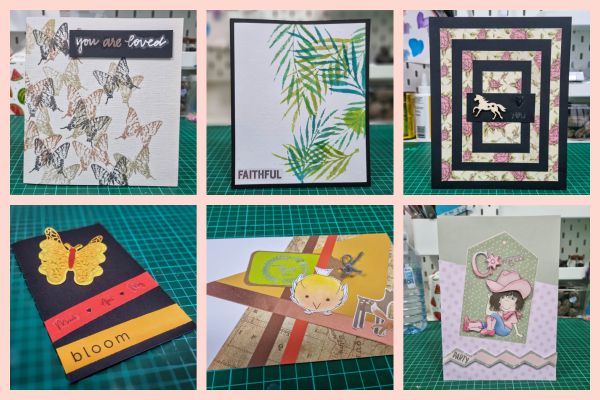
What is layering?
Card making layering techniques
#1 - Layering with stamps
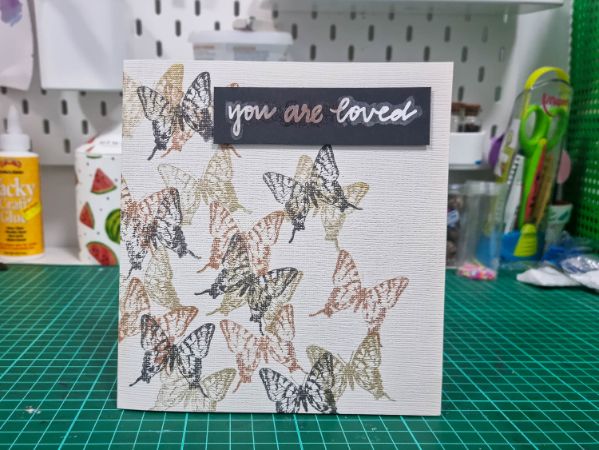
Supplies:
- Card base
- 3 different inks (make sure they are noticeably lighter/darker than each other)
- Stamp
- Stickers and scrap card for the sentiment
Using your lightest ink, stamp the first layer onto your card base (see photo below - bottom left). When the first layer of ink has dried, stamp a second layer using your mid-tone ink. Make sure to overlap some of your lighter-colored stamps as this is what will give your card a layered effect.
Next, stamp a third and final layer using your darkest ink (see photo below - right). Again, you will want to make sure you are stamping on top of the previous layers to really create that layered effect and add some depth to the card.
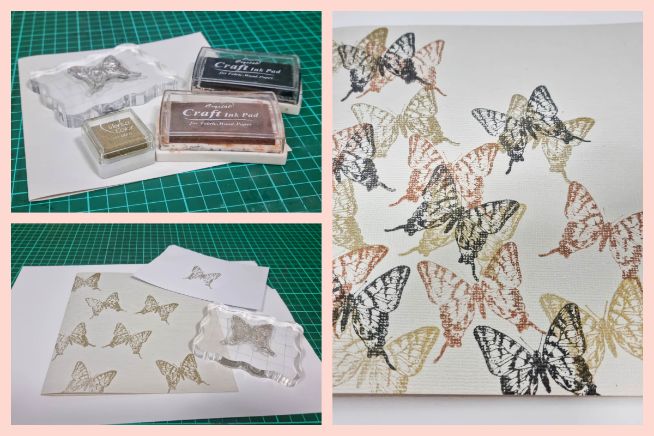
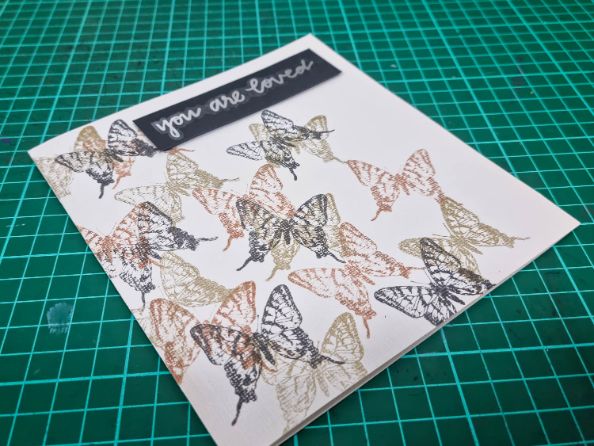
#2 - Layering with die
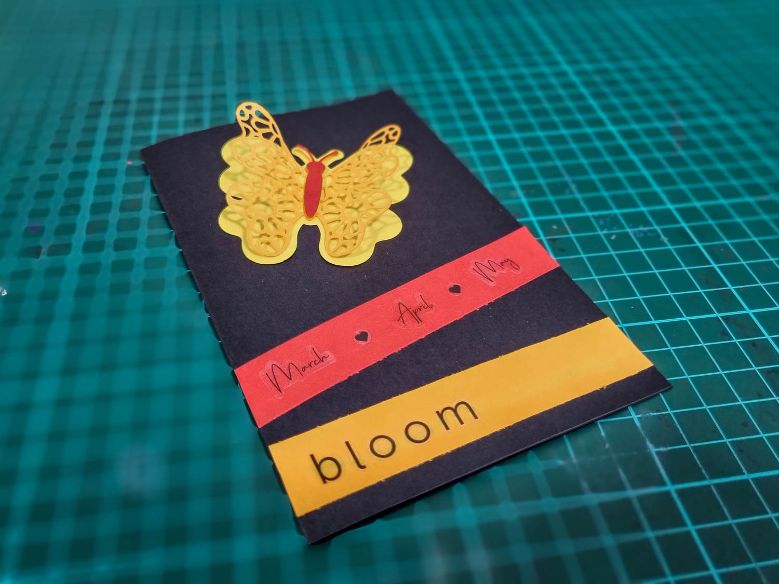
Supplies:
- Card base
- Nesting die
- Different color paper for each section of the die (light to dark colors)
- Stickers and scrap card for the sentiment
Gather your die and paper and work out which color you will be using for each section of the nesting die. Go ahead and cut these out using your die cut machine. You can see from the photos below that my nesting die has three sections and I have chosen to use yellow, orange and red.
Next, as per the photograph below on the right, glue your die cuts together to create your layered element. On my die cut butterfly, I made sure to only glue the orange layer at the body so that I was free to fold the wings up in flight. The red body piece was adhered with some double-sided foam squares to make it pop a little.
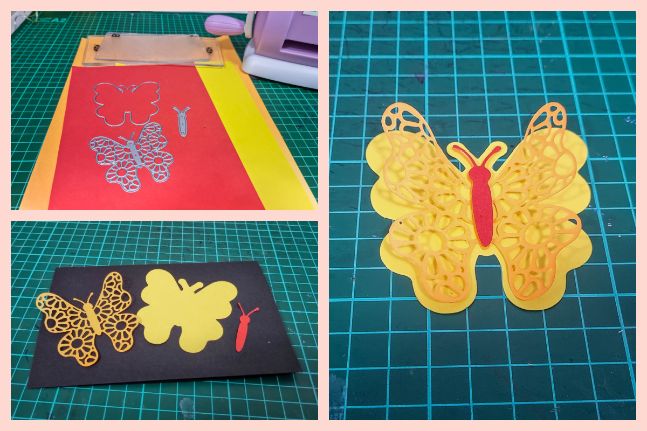
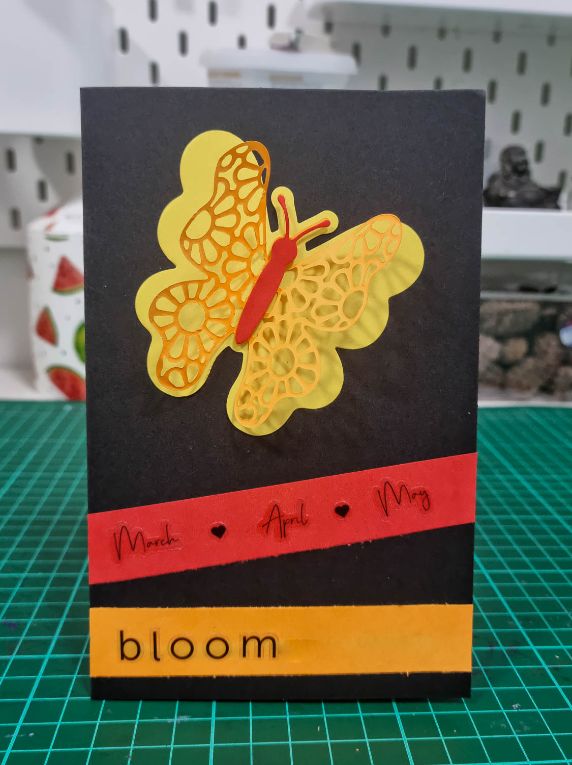
#3 - Layering with stencils
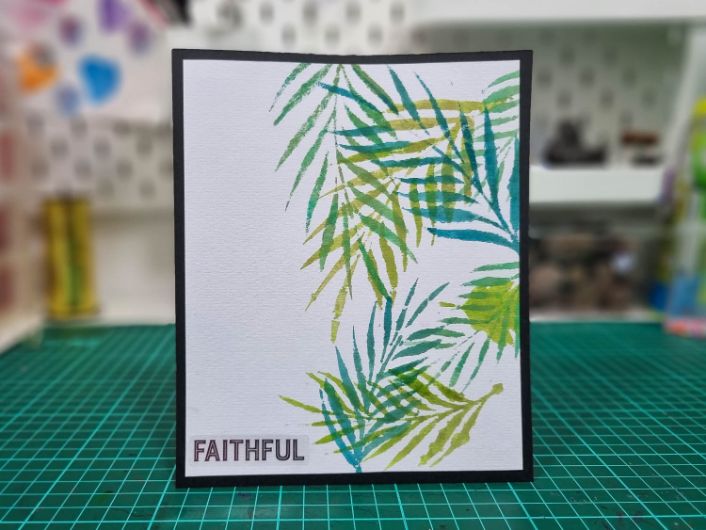
Supplies:
- Card base - dark colored
- Card face - watercolor paper
- Stencil
- Paint
- Sponge, foam pads or dabber
- Sticker for the sentiment
Lay out your watercolor paper on a flat surface and work out where the first layer of your stencil will go. Using your lightest color, load up your watercolor paint with a sponge, and dab over the top of the stencil (see photos below - top row).
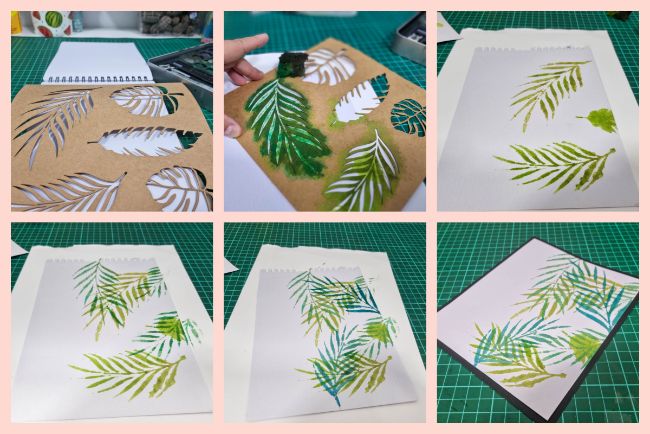
Next, cut your watercolor paper to size, slightly smaller than your card base, and glue it down onto your card base as per the photos above (bottom right).
Finish off this layered stencil card by adding a sticker for the sentiment.
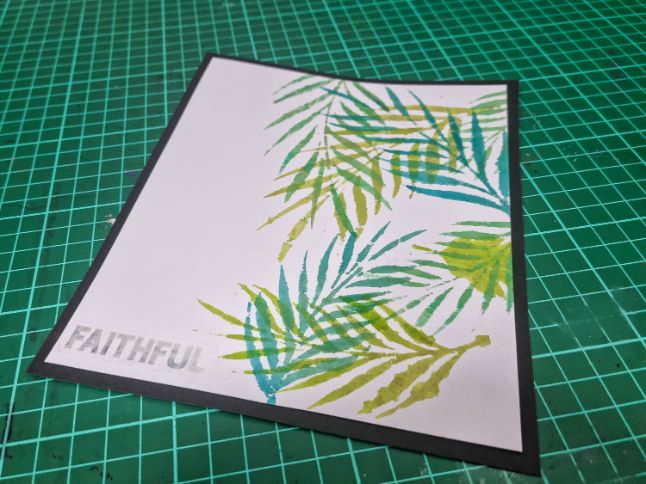
#4 - Layering simple rectangles
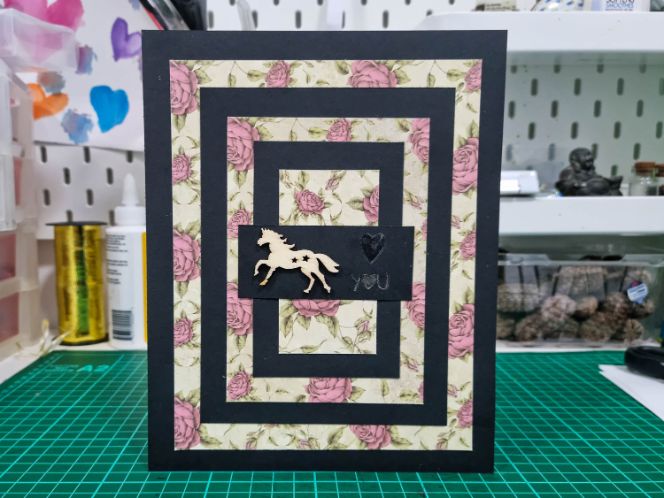
Supplies:
- Card base
- Plain colored cardstock or paper
- Pattern cardstock or paper
- A pre purchased embellishment
- Scrap cardstock and sticker for the sentiment
Starting with your plain colored cardstock, cut a rectangle the exact same size as the front face of your card base. Alternating between patterned and plain cardstock, cut five more pieces, each ½ an inch smaller on each side smaller than the last (see photos below - bottom left).
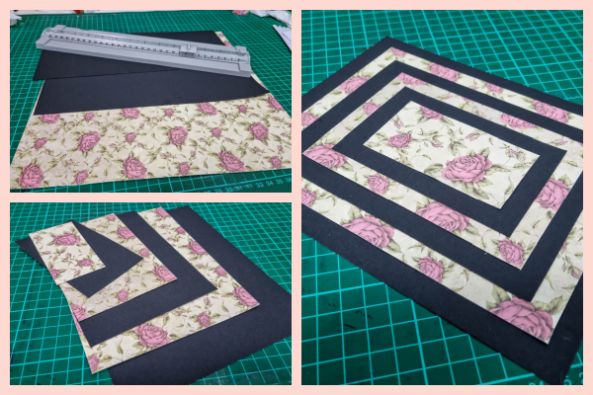
Next, using a scrap piece of cardstock and letter stickers, add the sentiment to your card as per the photograph below. For the final finishing touch, glue down a simple embellishment for some added interest.
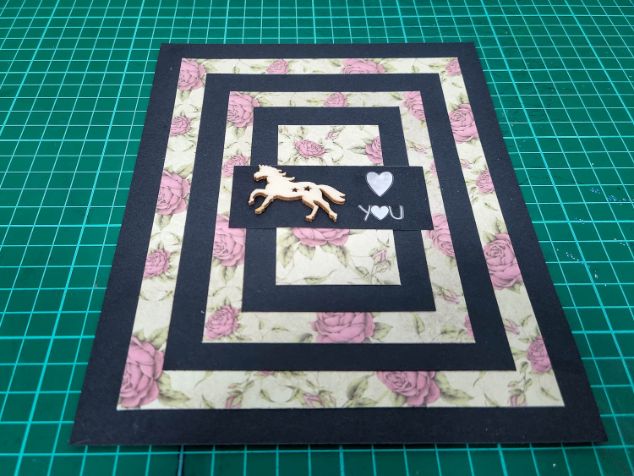
#5 - A cluster of layers
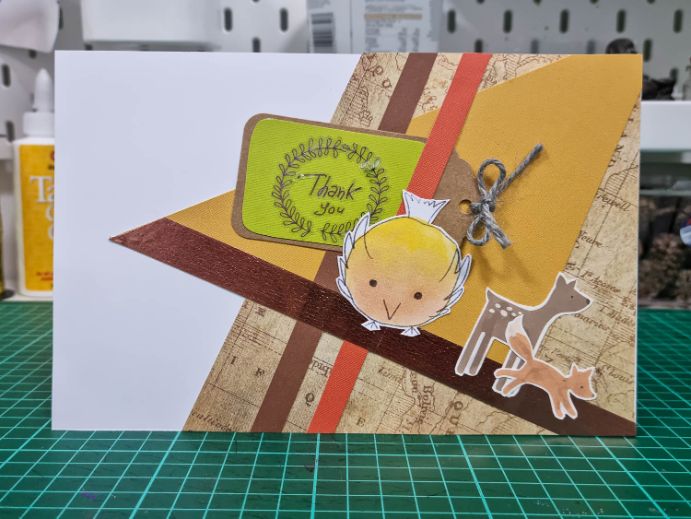
The idea relies on cluster layering all of the elements onto one section of the card face. The trick is to start with your bigger elements (such as a larger piece of cardstock) and add your smaller ones on top. The most important thing is to leave some white space on your card so that the design can 'breathe' and doesn't look too cluttered.
Supplies:
- White card base
- Mix of plain and patterned cardstock or paper scraps
- Mix of graphics, stickers, tags, washi tape and embellishments
Gather your potential supplies and lay them out in front of you. Once you have a color scheme in mind, discard anything that won't fit in with your color scheme. I went for woodland colors of yellows and browns with a touch of green and the below is what I was left with.
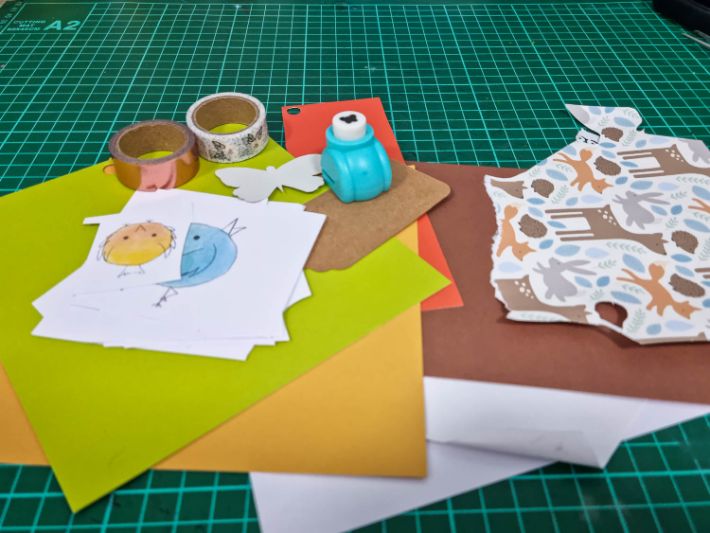
Don't glue anything down just yet!
Next, spend some time re-arranging and placing the other elements onto your card face until you've got it just right. Don't worry if this step takes a long time, sometimes it comes together quickly and sometimes it takes time. Remember not to encroach into the white space too much as its this white space that gives the cluster of layers a nice balance somewhere between minimal and cluttered.
Once you are happy with the result, go ahead and glue your pieces down.
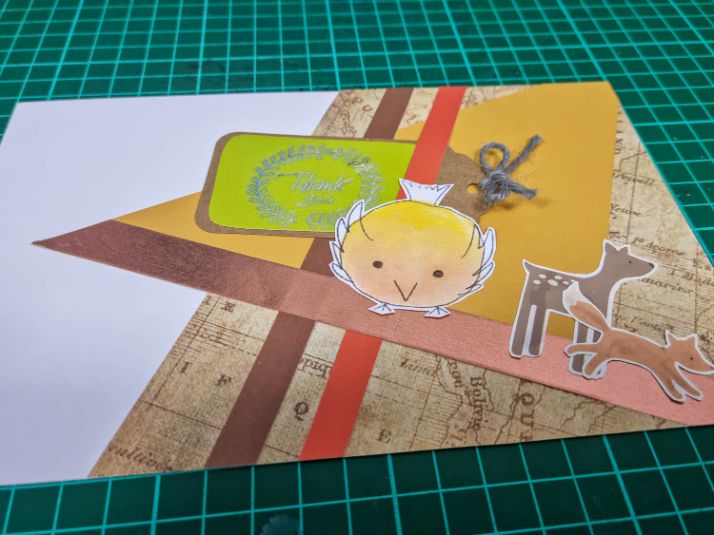
6 - Simple paper tole layers
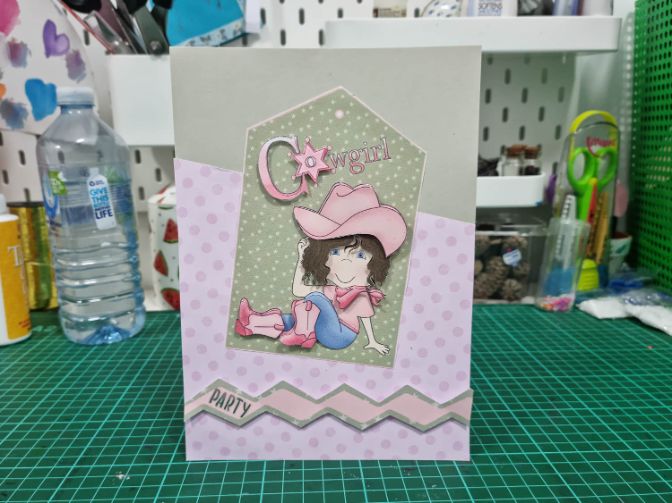
But what is paper tole? Well, its the art of making a three-dimensional picture from a flat print. This is done by reprinting and cutting certain elements of your picture and layering them on top of each other, usually with a piece of sticky foam or silicone glue between the pieces to give it some depth.
Supplies:
- Card base
- Scrap paper for the card face
- A paper tole topper or a graphic that you have printed multiple times. I used >> THIS ONE << from designer Di Simpson on the website craftsuprint.com.
- Foam squares or silicone glue
- Letter stickers for the sentiment
Start with your card base and glue down the 'base' elements such as any patterned paper and the image that you plan to create layers on. You can see in the photo below that I have glued down a spotty pattern and the image of a cowgirl as my starting point. You will also see a printout of the elements to be layered (from the link in the supplies section above) beside it.
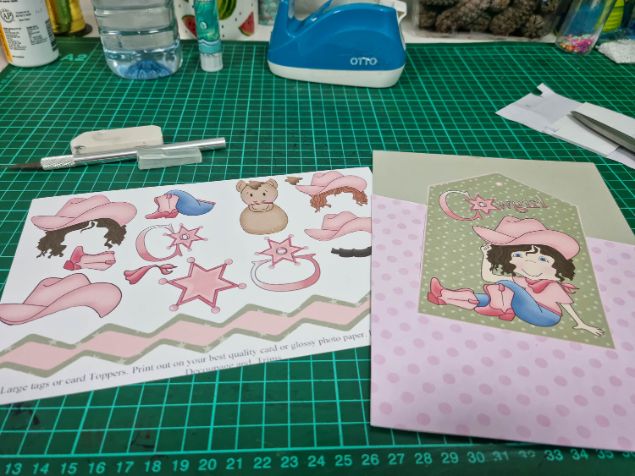
When your pieces have been cut out, adhere them to your base graphic using either double sided foam squares (you may have to trim these smaller) or silicone glue.
Finish this card by adding your sentiment stick to the card. I ended up sticking mine onto a zig zag piece that was included in the graphics kit mentioned above.

What do you think?
Happy card making!


